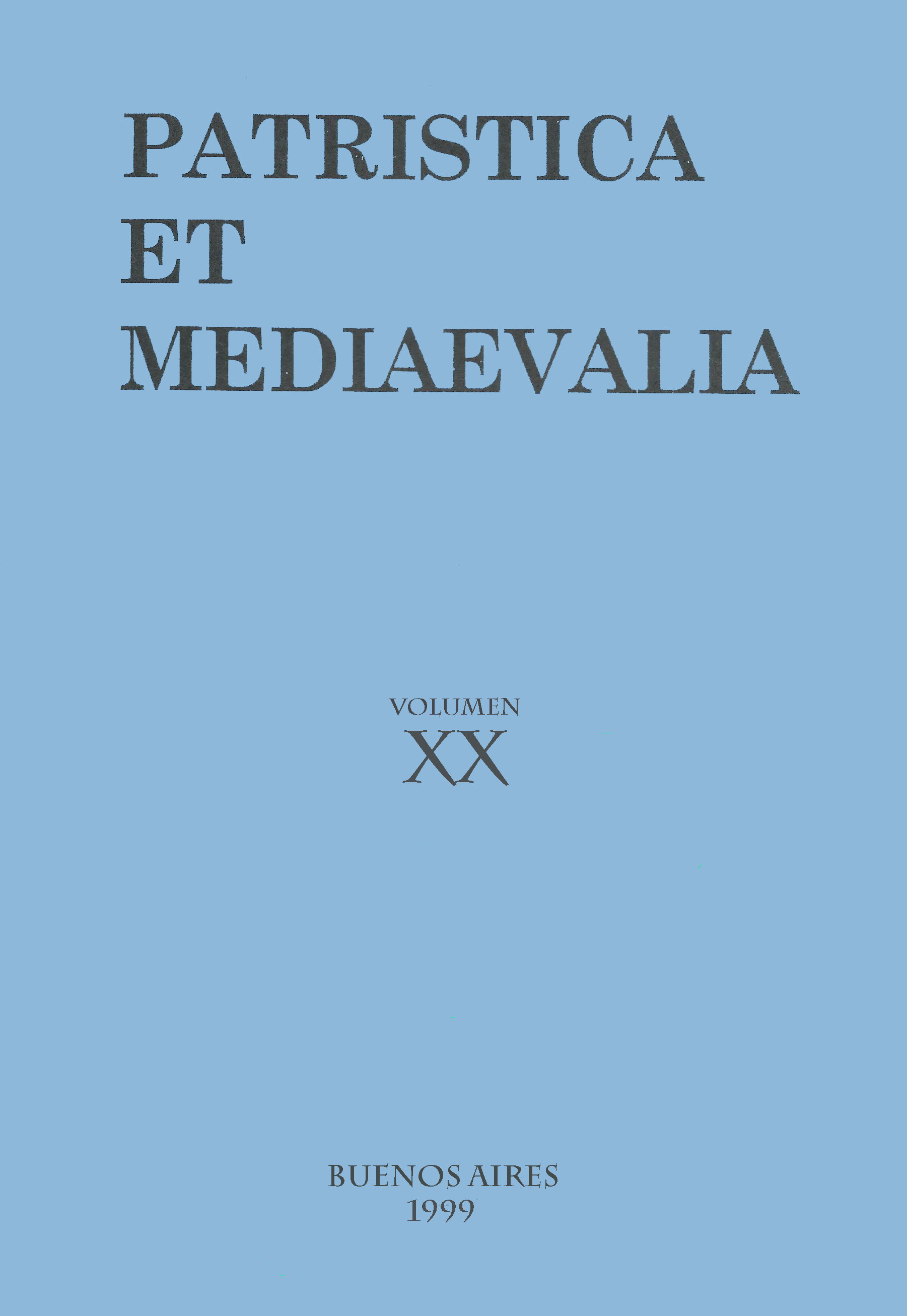The Hermetic Theory of the Microcosm in the Metaphysics of Albert the Great and in the Commentary to Proclus of Berthold of Moosburg
Abstract
This article studies the definition of microcosm that Berthold of Moosburg presents on his commentary on the Elementatio Theologica of Proclo. It establishes that the concept of microcosm that Berthold develops doesn’t come directly from Hermetic’s treatises but from an Asclepius’s text modified by Albertus Magnus on some of his most Neoplatonic works: his Commentaries to the Aristotelian’s Metaphysics and to the Liber of Causis. Berthold partially follows Albertus but also innovates his analysis, by radicalizing some tendencies of his thought and deepening his Neoplatonism with new sources.Downloads
References
Beierwaltes, W. (1979). Proklos, Grundzüge seine Metaphysik (Philosophische Abhandlungen, Bd. 24). Frankfurt: Klostermann.
Hof, H. (1952). Scientilla animae: Eine Studie zu einem Grundbegriff in Meister Eckharts Philosophie mit besonderer Berücksichtigung des Verhältnisses der Eckhartschen Philosophie zur neuplatonischen und thomistischen Anschauung. Lund/Bonn: C. W. K. Gleerup/ Peter Hanstein.
Jeck, U. R. (1992). Ps. - Dionysios Areopagites und der Bilderstreit in Byzans. Hermeneia, Zeitschrift für ostkirchliche Kunst, 8.2, 71-80.
Jeck, U. R. (1994). Dionysios Areopagites’ Theorie des Schönen in armenischer Version. Hermeneia, Zeitschrift für ostkirchliche Kunst, 10.2, 96-102.
Jeck, U. R. (1996). Philosophie der Kunst und Theorie des Schönen bei Ps.-Dionysios Areopagites. Documenti e studi sulla tradizione filosofica medievale, 7, 1-38.
Jeck, U. R. (1997). Ein Zusatz zum Corpus Dionysiacum. Byzantinische Zeitschrift, 90.1, 64-72.
Jeck, U. R. (1998). Ps. Dionysios Areopagita. In Nida-Rümelin, J. & Betzler, M. (Hg.). Ästhetik und Kunstphilosophie, Von der Antike bis zur Gegenwart in Einzeldarstellungen. Stuttgart: Alfred Kröner Verlag, 649-654.
Jeck, U. R. (1998). Mystische Kontemplation und sakrale Musik bei Ps.-Dionysios Areopagites und seinen Kommentatoren. In Hentschel, F. (Hrsg.). Musik- und die Geschichte der Philosophie und Naturwissenschaften im Mittelalter, Fragen zur Wechselwirkung von ‘musica’ und ‘philosophia’ im Mittelalter (Studien und Texte zur Geistesgeschichte des Mittelalters, Bd. 62). Leiden/Boston/Köln: Brill, 125-140.
Jeck, U. R. (1998). Albert der Große über die Natur der Metalle, Ein Beitrag zur Geschichte des Hermetismus in der Philosophie des deizehnten Jahrhunderts. System und Struktur, Neue Zeitschrift für spekulative Physik, 6.1, 121-137.
Kroll, J. (1914). Die Lehren des Hermes Trismegistos (Beiträge zur Geschichte der Philosophie des Mittelalters XII.2). Münster: Aschendorf.
Mojsisch, B. (1977). Die Theorie des Intellekts bei Dietrich von Freiburg. Hamburg: Meiner.
Sturlese, L. (1986). ‘Homo divinus’, Der Prokloskommentar Bertholds von Moosburg und die Probleme der nacheckhartschen Zeit. In Ruh, K. (Hrsg.). Abendländische Mystik im Mittelalter, Symposion Kloster Engelberg 1984 (Germanistische Symposien - Berichtsbände VII). Stuttgart: Metzler, 145-161.
1. The authors who publish in this magazine accept the following conditions:
-
They retain the copyright and grant to the magazine the right of the first publication, with the work registered under the Attribution-ShareAlike 4.0 International License that allows third parties to use what is published as long as they mention the authorship of the work and the first publication in this magazine.
-
They can make other independent and additional contractual agreements for the non-exclusive distribution of the version of the article published in this magazine (eg. include it in an institutional repository or publish it in a book) provided that they clearly indicate that the work was first published in this journal.
-
They are allowed and recommended to publish their work on the Internet (for example on institutional or personal pages).
2. AutoArchive Conditions. Authors are allowed and encouraged to distribute post-print electronic versions of their manuscripts because it promotes their circulation, a possible increase of quotation and a major reach among the Academic community. Color RoMEO: blue.













